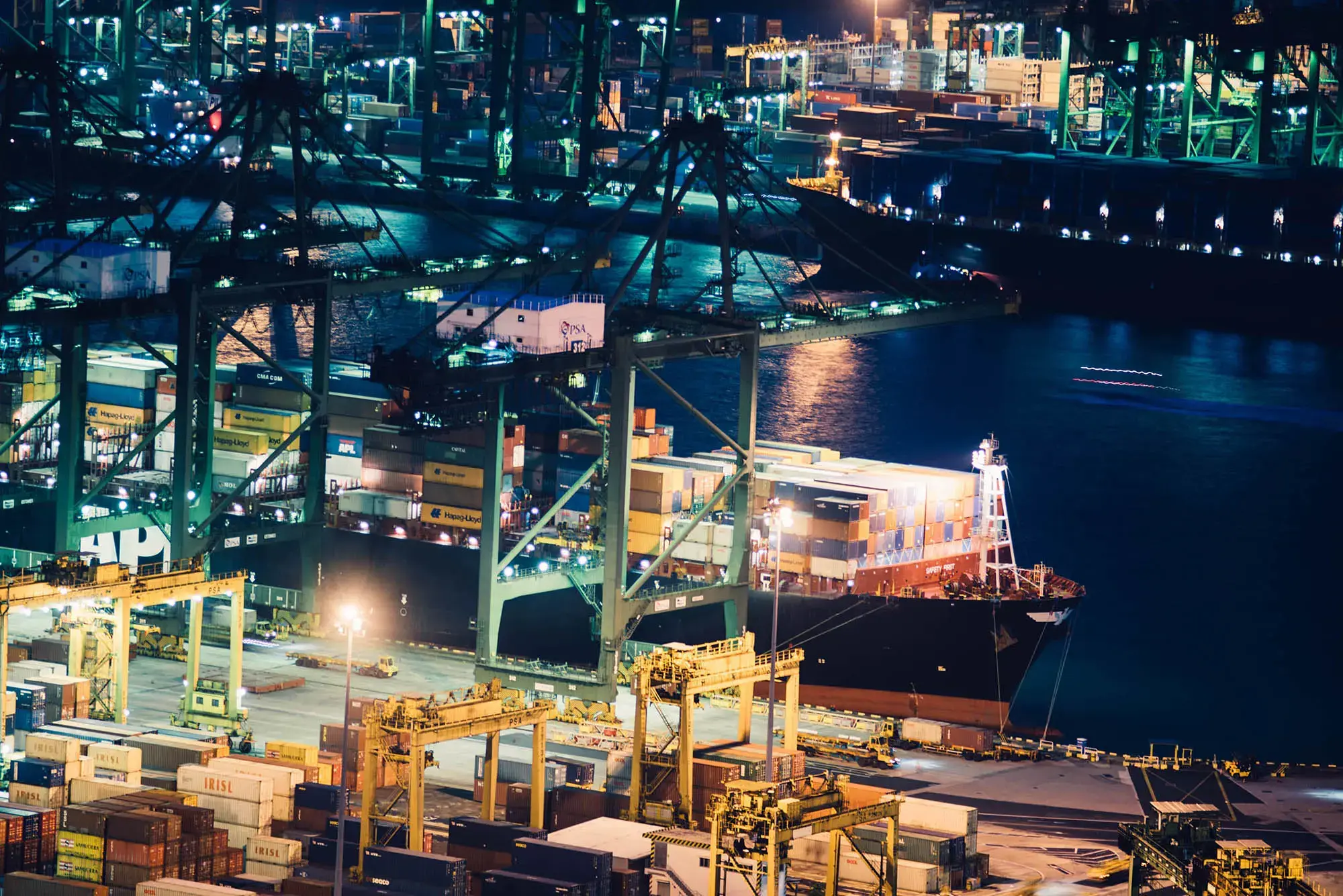According to shipping industry news, on November 1st, a historic moment arrived at Guangzhou Port’s Nansha Port Area: China’s first and the world’s largest LNG bunkering vessel, the “Hai Yang Shi You 301,” safely berthed alongside the 150,000-ton mega-container ship “MSC THAIS” (Chinese name “Mediterranean Tai’an Si”) and successfully completed a bunkering operation of approximately 3,000 cubic meters of bonded liquefied natural gas (LNG). This marks Guangzhou Port’s first successful ship-to-ship LNG bunkering operation at a berth, simultaneously completed alongside container loading and unloading operations, establishing it as the first port in South China with full-mode bonded LNG bunkering capabilities encompassing both “anchorage + berth.” This breakthrough is not only a significant milestone for the construction of the Guangzhou international shipping hub but also a vivid demonstration of the Guangzhou Municipal Port Bureau taking the lead in implementing the national “dual carbon” strategy and optimizing the business environment.
Meticulous Planning and Comprehensive Deployment, Building a Solid Foundation for Bunkering Safety
As the core promoter of this bunkering operation, the Guangzhou Municipal Port Bureau fully leveraged its coordinating role, proactively establishing a safety assurance system. To ensure absolute success, the Port Bureau led the organization of units including Guangzhou Port Group and CNOOC Guangdong Water Transport Energy Company, specifically formulating a detailed navigation safety advisory report for the “Hai Yang Shi You 301” entering and leaving Nansha Port Area, and conducted in-depth research on safety measures for terminal operations. Simultaneously, it promoted the completion of the special project “Research on LNG-Powered Ship Bunkering Operation Plan for Guangzhou Nansha Port,” providing technical support for the normalization of the business. For this specific operation, the Port Bureau guided the formulation of a specialized plan and dispatched high-horsepower fire-fighting tugboats for全程监护,实时应对海况变化, demonstrating Guangzhou Port’s极致追求 of safety standards. The Guangzhou Port Pilot Station played a key role in this operation, assigning three业务骨干 to form a pilotage team. The team comprehensively considered meteorological, hydrological, and other conditions to formulate a meticulous pilotage plan. Working closely with the bunkering vessel and the receiving vessel, the pilotage team精细把控 every环节, safely and punctually completing the pilotage task, successfully overcoming the technical challenges of maneuvering for LNG vessel bunkering, and accumulating valuable experience for subsequent operations.
Enhancing the Shipping Business Environment, Empowering a Leap in Hub Capacity
This breakthrough in LNG bunkering services directly enhances Guangzhou Port’s international competitiveness. Wan Xinzhou, Party Leadership Group Member and Deputy Director of the Guangzhou Municipal Port Bureau, pointed out: “Developing bonded fuel bunkering for internationally voyaging ships is not only necessary for stabilizing existing shipping routes but is also a key lever for attracting high-end shipping services such as ship inspection and shipping insurance.” Guangzhou Port’s cargo throughput in 2024 reached 680 million tons and container throughput reached 26.45 million TEUs, ranking among the top five and top six globally respectively. This year, its growth rate for foreign trade containers ranked first among major coastal ports in China. The完善 of LNG bunkering capabilities enables Guangzhou Port to form a full-chain service system of “/unloading operations + fuel supply + logistics support,” providing convenient and environmentally friendly refueling options for international liner companies like MSC and Maersk, thereby enhancing its appeal to高端客户. The Nansha Port Area, as the growth engine for Guangzhou Port’s foreign trade business, with its完善的航线网络, provides a stable customer base for LNG bunkering services.
Implementing the Dual Carbon Strategy, Leading the Green Shipping Transformation
The success of the LNG bunkering operation is a concrete action by Guangzhou Port in implementing the national “dual carbon” strategy. Data shows that compared to traditional marine fuel oil, LNG can achieve zero emissions of sulfur oxides, reduce nitrogen oxides by approximately 90%, and reduce carbon dioxide emissions by approximately 20%-25%, potentially lowering fuel costs for shipowners by about 30% annually. Against the backdrop of the global shipping industry accelerating its green transition, this bunkering operation responds to the requirements of the IMO’s sulfur cap and carbon neutrality timeline. Currently, global orders for LNG-powered vessels have reached 1,397 ships, and the ship types are expanding to include large ocean-going vessels. Among new alternative fuel orders in the first half of 2025, LNG dual-fuel vessels accounted for 87 ships. Guangzhou Port’s entry into this field timely provides a practical and feasible clean energy solution for the shipping industry. Dai Tinglei, Director of the Guangzhou Port Shares Dispatching and Command Center, stated: “Achieving full coverage of LNG bunkering services from sea to berth this time marks a solid step forward for Guangzhou Port in building a green port. We will continue to expand the application scenarios of clean energy, contributing port strength to the ‘carbon peak, carbon neutrality’ goals.”
Looking to the Future: From Regional Benchmark to National Model
This innovation by Guangzhou Port not only fills a gap in its own high-end maritime services but also enriches the sample set for the green transformation of ports nationwide by drawing on the mature experience of ports like Shenzhen Port. In the future, Guangzhou Port will explore dual-mode “bonded + non-bonded” operations, promote innovations such as “cross-customs supply” and “one vessel supplying multiple ships,” and rely on the Nansha Port Area to build a regular LNG storage tank base, gradually achieving “one port, multiple vessels” bunkering. Collaborative cooperation within the Guangdong-Hong Kong-Macao Greater Bay Area port cluster is expected to form an “LNG Bunkering Service Alliance,” further amplifying the regional green shipping effect.
Driven continuously by the Guangzhou Municipal Port Bureau, Guangzhou Port is transforming from a cargo hub to an energy hub, proving through practice that traditional ports can find new growth poles in the green transformation, providing a Chinese solution for the global shipping industry to balance traditional energy and clean energy.





